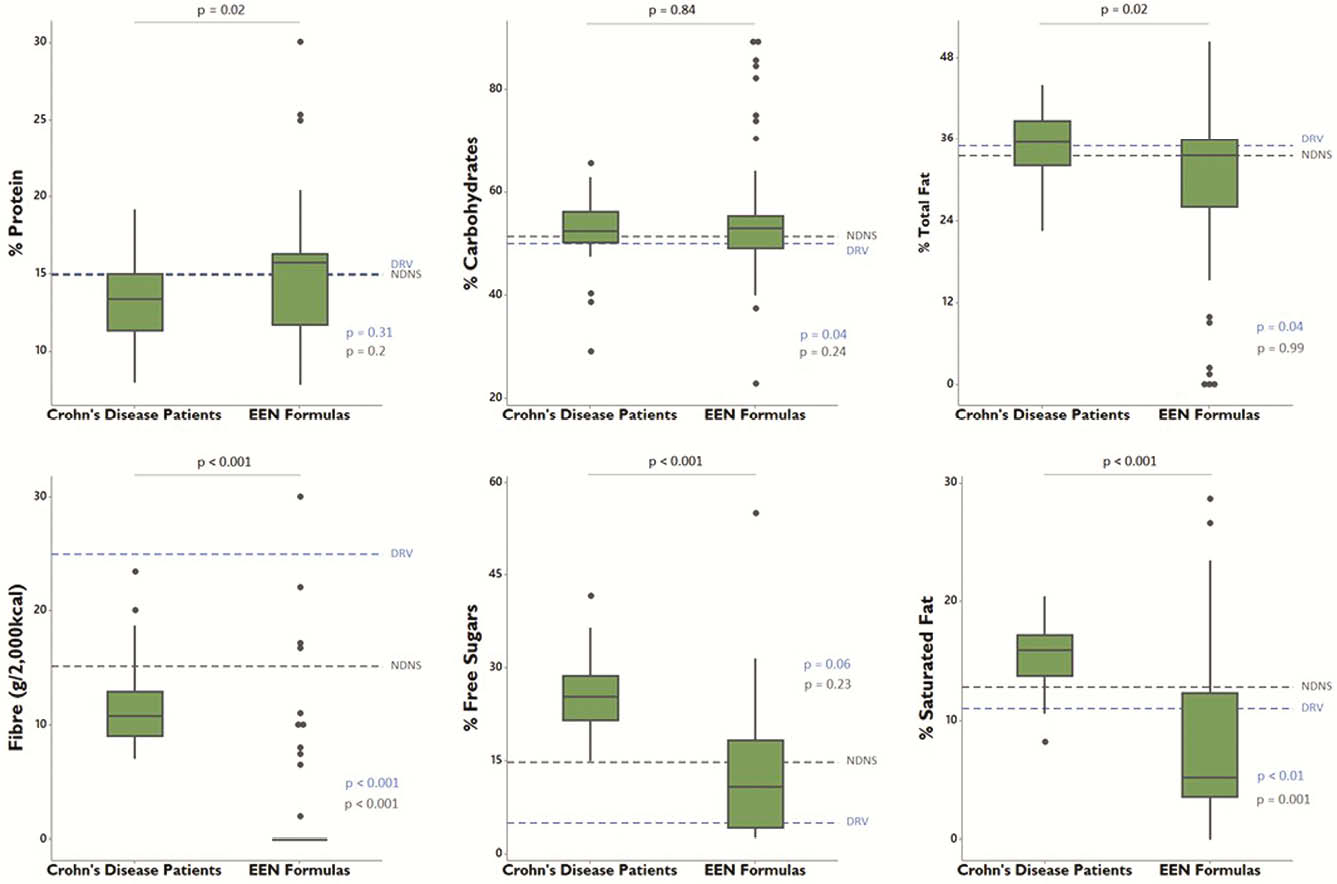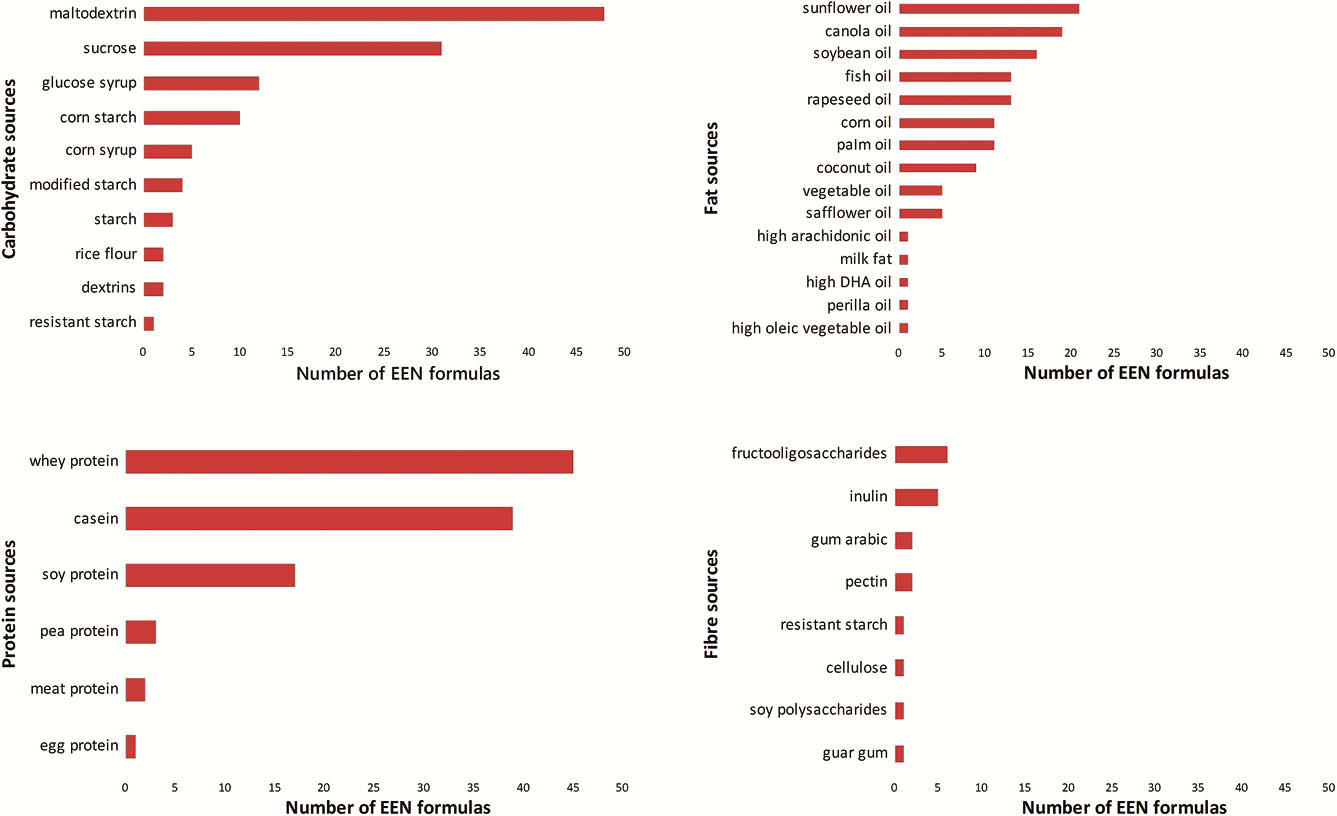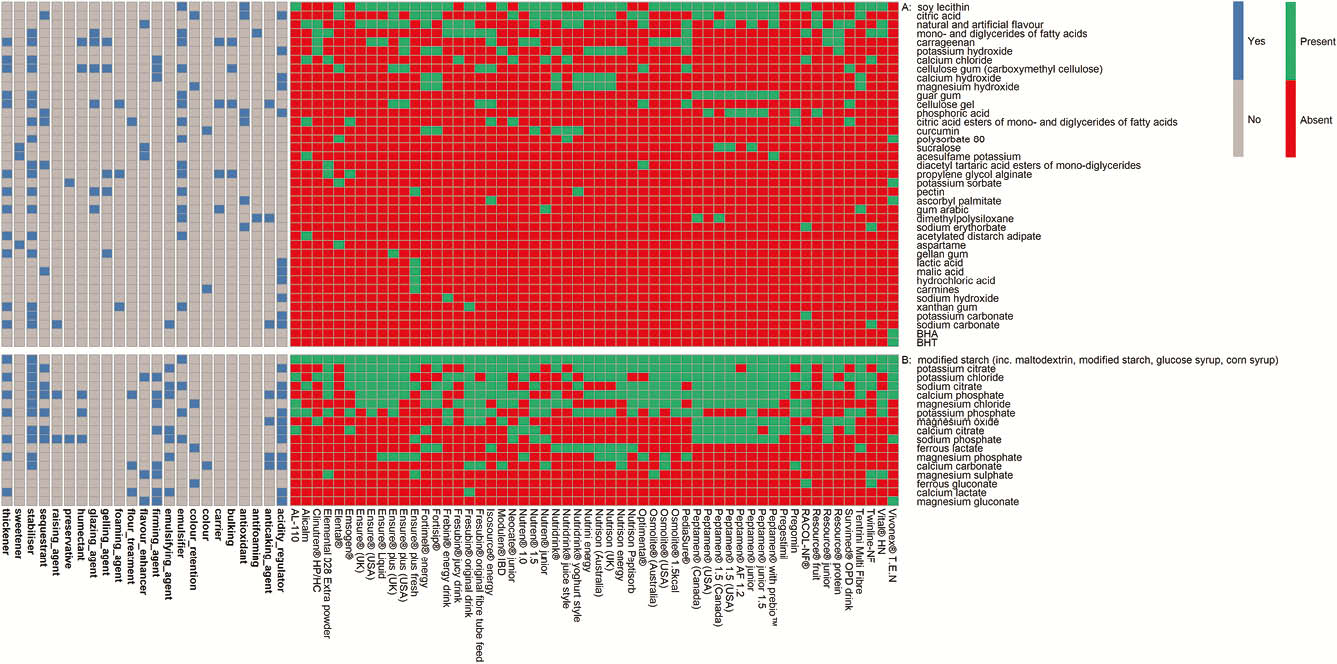P050 Analysis of 61 exclusive enteral nutrition formulas used for induction of remission in Crohn’s disease: new insights on dietary disease triggers
M. Logan1, K. Gkikas1, V. Svolos1, B. Nichols1, S. Milling2, U. Ijaz3, R. Hansen4, R.K. Russell4, K. Gerasimidis1, BINGO (Bacteria Inflammation Nutrition Gastroenterology and Omics)
1University of Glasgow, Human Nutrition, Glasgow, UK, 2University of Glasgow, Infection- Immunity and Inflammation, Glasgow, UK, 3University of Glasgow, School of Engineering, Glasgow, UK, 4Greater Glasgow and Clyde NHS, Paediatric gastroenterology, Glasgow, UK
Background
Exclusive enteral nutrition (EEN) is an effective treatment of Crohn’s disease (CD). We hypothesise that food ingredients which are included in EEN formulas are less likely to initiate a disease flare and that their dietary elimination is not essential for disease amelioration.
Methods
We performed a compositional analysis of EEN formulas with evidence of clinical efficacy for the induction of remission in active CD. Macronutrient content was compared against the dietary reference values (DRVs), the UK National Diet and Nutrition Survey (NDNS) and children with CD. Food additives included with EEN formulas were cross-referenced against the FAO/WHO database.
Results
Sixty-one formulas were identified with variable composition [carbohydrates (23–89%), protein (8–30%), fat (0–50%)], Figure 1. Modified starches (e.g. maltodextrin), milk protein and vegetable/plant oils were the commonest sources of carbohydrate, protein and fat, respectively, Figure 2. The n-6:n-3 fatty acid ratio varied from 0.3 to 46.5. Fifty-six unique food additives were identified contained within EEN formulas (median per formula: 11), Figure 3. All formulas were lactose, gluten free. Eighty per cent lacked fibre. The five commonest food additive functional classes were emulsifiers, stabilisers, antioxidants, acidity regulators, and thickeners. Food additives, implicated in CD aetiology, were present in formulas [modified starches (100%), carrageenan (23%), carboxymethyl cellulose (14%) and polysorbate 80 (5%)]. EEN formulas derived 7.9% less energy from saturated fat than participants from the NDNS (



Conclusion
We provide a list of food ingredients which are unlikely, in the amount provided within EEN, to trigger CD activity. Current perceptions about the role of these ingredients in CD management are challenged.


